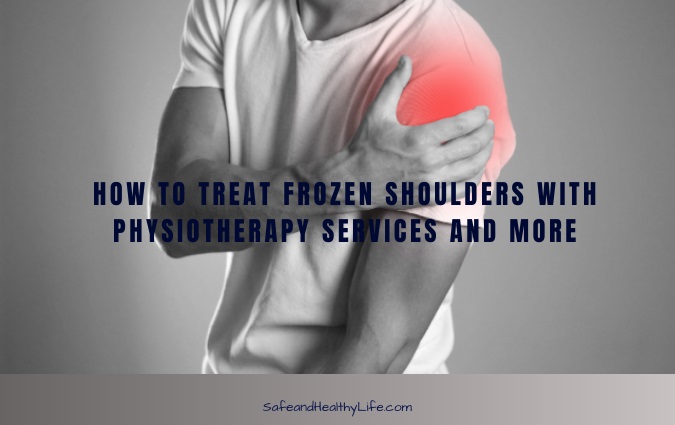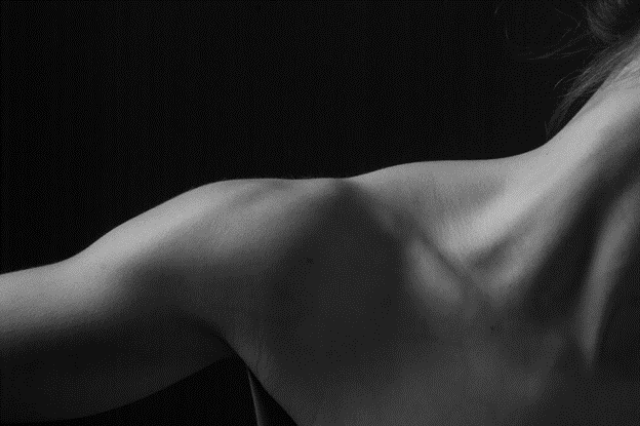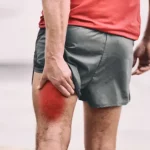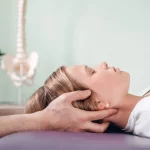
Adhesive capsulitis, generally known as Frozen Shoulder is an ailment that affects the most mobile joint in the body(1), the shoulder joint, causing stiffness and pain as evident by the name.
It may be primary, or idiopathic, without any known cause, however, hormonal imbalances or systemic diseases may add to the risk. Or it may be secondary, caused by any external factor such as injury, surgery, or immobility.
The condition arises slowly with the symptoms of pain and discomfort around the deltoid insertion on the tip of the shoulder, making it quite difficult for the patient to sleep on the affected side. The abduction and external rotation of the shoulder is restricted.
Symptoms of frozen shoulder may be confused with rotator cuff tendinitis. However, the latter mainly manifests as pain arising from the inflamed muscle tendons inserting at the bone end. But in the former, the main complaint is movement restriction along with long-standing chronic pain.
A rotator cuff is a group of muscles that stabilize the shoulder joint while allowing it to move in extreme ranges. Tendinitis or bursitis of the shoulder may be different from the frozen shoulder but these conditions can act as a causal factor if not treated in time.
The pathophysiology of the frozen shoulder is not fully understood; however, radiological studies show a thickening of the joint capsule and the adjoining coracohumeral ligament, and histological studies done on the tissue from the affected area found fibroblasts and chronic inflammatory cells. These findings suggest an underlying inflammatory process that may have raised by an injury or illness following a long period of immobility.
Clinically, frozen shoulder advances through three phases generally termed as freezing, frozen, and thawing phase.
- The Freezing Phase lasts for 6-9 months. It may further be subdivided into 3 stages. The acute, subacute, and chronic.
- The acute stage is characterized by consistent pain that worsens at night.
- During the subacute stage, the pain only arises at night.
- While in the chronic stage, only the movement is painful and restricted, and there is no pain at rest.
- The Frozen Phase lasts from 6-12 months. During this phase, the patient is somewhat, or in some cases, completely free of pain. However, activities of daily living (ADLs) are severely affected, and the patient is unable to perform simple tasks like combing one’s hair due to movement restriction from the stiffness.
- The Thawing Phase is mainly the recovery phase that may last up to two years. The joint stiffness slowly wears off and the patient returns to their normal activities.
The frozen shoulder can return after the recovery especially in the high-risk population. The factors or conditions predisposing a person to the frozen shoulder include:
- Female gender
- Age above 40.
- Recent surgery i.e., mastectomy, cardiac or upper limb surgery.
- Diabetes
- Parkinson’s disease
- Thyroid disorders
- Improper treatment of a previous shoulder injury
Physical findings of a frozen shoulder comprise restriction of passive external rotation of the joint. The definitive diagnosis is made through inspection of the affected shoulder and examination through physical tests, X-ray, and MRI by ruling out other possible causes of pain and stiffness such as arthritis, tendonitis, strain/sprain, bone tumors, or joint dysfunction.
Management of frozen shoulder is done while considering each patient’s level of disability and severity of symptoms to provide the most effective intervention.
Patient counseling is the foremost step of disease management that satisfies and encourages the patient towards therapy and recovery. Knowledge is power.
Educating the patient about their symptoms, treatment options and prognosis provides a sense of control and yields patient compliance.
Here are a few conventional shoulder treatments:

Over-the-counter pain-relief
Medications, cooling gel, hot and cold packs, and cryotherapy are the interventions most suitable during the freezing phase to help overcome the pain.
Therapeutic ultrasound methods
Transcutaneous electrical nerve stimulation (TENS) and interferential therapy provide relief from pain and inflammation. Electrotherapy works best when applied in conjunction with physical therapy.
Physical therapy
Started after the pain is managed. It is started with low-grade exercises such as passive stretching, range of motion exercises, and mild joint mobilizations within a pain-free range. Then it proceeds to the isometric strengthening of upper limb musculature.
Aggressive mobilizations are contra-indicated as they fail to yield better results than mild exercises. A great local place in Mississauga is Grey Method – Physiotherapy & Massage Therapy.
Corticosteroid therapy
This may be used in conjunction with physiotherapy in patients with severe symptoms when the benefits supersede the side effects of steroids.
Manipulation Under Anesthesia
Although uncommon, this method of treatment is used for severe stiffness. In this procedure, the patient is given local anesthesia, and then the humerus is moved into flexion, external rotation, external rotation with abduction, and finally, internal rotation with abduction. Physical therapy must be continued after the procedure. It provides long-term relief from stiffness.
However, some studies find negative consequences to this aggressive approach including intraarticular lesions such as bleeding, rupture, tears, and osteochondral defects.
Distension arthrography or hydro dilation
A procedure that comprises injecting sterile water in the joint with such pressure that the contracted capsule is ruptured. It may be followed by intraarticular steroid injection.
This procedure is effective in the treatment of the primary frozen shoulder and provides an immediate gain of range. It must be followed by an extensive physical therapy regime to maintain the acquired range and move forward in the recovery process.
Open surgical release
This form of relief may be done as a last resort when exercise and arthroscopic release fails to gain any results. It is also used in complicated cases with hemorrhage and spurs where closed manipulation may extend the injury.
Surgery is contraindicated in patients that are intolerant of fluid changes (renal or cardiac issues). Surgery poses its own risks. Postoperative pain, immobility to protect the incision, and a long stay at the hospital are some of the undesirable aspects of this treatment method. (1, 2)
- Wong P, Tan HJSmj. A review on frozen shoulder. 2010;51(9):694.
- Robinson C, Seah KM, Chee Y, Hindle P, Murray IJTJob, volume jsB. Frozen shoulder. 2012;94(1):1-9.
About The Author:
The Author, Sira, is a Physiotherapist by profession who is currently working towards her master’s in Women’s Health Physical Therapy. She enjoys writing content related to health and physical fitness, lifestyle modification, and rehabilitation




